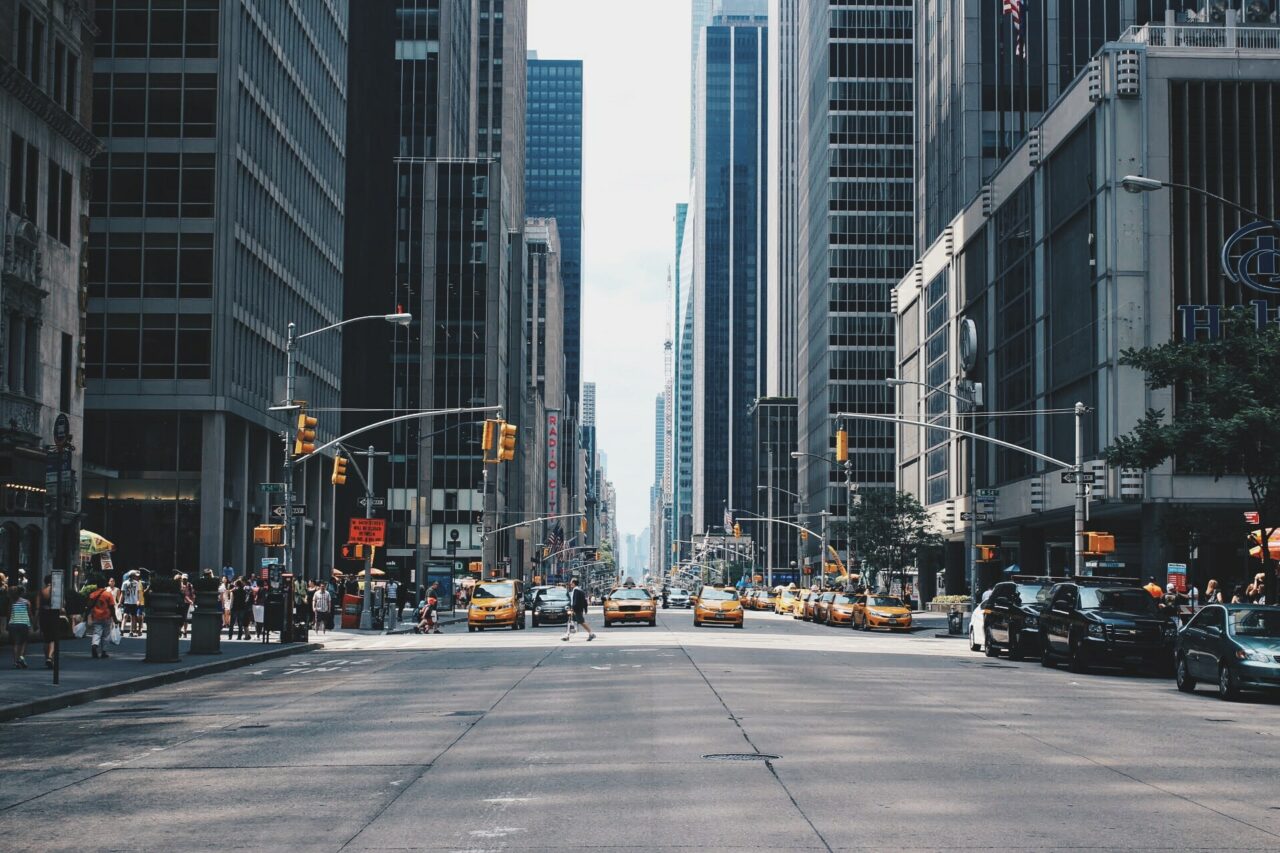infection prevention and control
NEW YORK
New York Employers Looking for Interim Candidates
Infection Prevention Professionals Looking for Opportunities



demographics
New York is one of the most populous states in the United States, with a diverse population that includes people from many different backgrounds. As of 2021, the estimated population of New York is approximately 20 million people.
New York City is the most populous city in the state, with over 8 million residents. It is a melting pot of cultures and languages, with a large immigrant population that contributes to the city’s vibrant and diverse communities. Other major cities in New York include Buffalo, Rochester, and Syracuse.
New York has a relatively high percentage of minorities compared to other states in the country, with about 44% of the population identifying as non-white. The largest minority groups in the state are Hispanic/Latino (19%), Black/African American (15%), and Asian (9%). Given that it is such a diverse place, it is an ideal area for an Infection Prevention Professional, as it is welcoming to newcomers.
The median age in New York is 39 years old, and the state has a fairly even gender distribution with slightly more females than males. The state also has a relatively high median household income of over $70,000, but there are significant income disparities between urban and rural areas.
cost of living
The cost of living in New York can vary significantly depending on the region, with New York City being one of the most expensive cities in the country. However, the state as a whole has a higher cost of living compared to the national average. Here are some factors that contribute to the cost of living in New York. The cost of housing is one of the biggest expenses in New York, especially in New York City. The average rent for a one-bedroom apartment in the city is over $3,000 per month, while the average home price in the state is over $400,000. New York has some of the highest taxes in the country, with a state income tax ranging from 4% to 8.82% and a sales tax of 4% to 8.875%, depending on the region. Property taxes can also be high, especially in suburban areas. New York City is known for its extensive public transportation system, but the cost of using it can add up quickly. The cost of a monthly subway pass is over $100, and tolls on bridges and tunnels can be expensive. Food prices can also be higher in New York, especially in urban areas where there are more options for dining out. Groceries can also be expensive, with prices for staples like bread, milk, and eggs generally higher than the national average. Overall, while the cost of living in New York can be high, it is important to note that salaries and job opportunities can also be higher than in other parts of the country. It is an ideal area for Infection Prevention Professionals searching for a unique location with a thriving economy.








education
New York has a diverse and extensive education system that includes public and private schools, colleges, and universities. Here are some key facts about education in New York. New York has one of the largest public school systems in the country, with over 2.5 million students enrolled in more than 4,500 schools. The state has a strong commitment to education, with a budget of over $70 billion for education in 2021. New York has a significant number of charter schools, which are publicly funded but independently run schools that operate outside of the traditional public school system. New York is also home to many private schools, including some of the most prestigious schools in the country. Private schools offer a range of educational options, including religious schools, Montessori schools, and schools with specialized programs. New York is home to some of the most well-respected colleges and universities in the world, including Ivy League schools like Columbia University and Cornell University. The state also has a large public university system, with institutions like the State University of New York (SUNY) and the City University of New York (CUNY). New York has a strong commitment to providing special education services to students with disabilities. The state provides a range of services, including individualized education plans (IEPs), special education classes, and related services like speech therapy and occupational therapy.
Overall, New York offers a wide range of educational opportunities for students of all ages and backgrounds.
Due to the many academic opportunities, it is a great place for Infection Preventionist professionals to move to with their families.
taxes
Overall, taxes in New York are among the highest in the country, particularly for high earners and property owners. However, the state also offers various tax credits and deductions that can help offset the overall tax burden for some individuals and businesses.
This is another reason why Infection Prevention and Control Professionals find New York to be a great area to move to.








climate
New York has a diverse climate that varies widely across the state, from the hot summers of New York City to the snowy winters of upstate New York. Here are some key features of the climate in New York. New York has a humid continental climate, which means that it has four distinct seasons with wide temperature fluctuations throughout the year. Summers are generally warm and humid, with average temperatures ranging from the mid-70s to mid-80s Fahrenheit. Winters are cold and snowy, with average temperatures ranging from the mid-20s to mid-30s Fahrenheit. New York receives an average of around 40 inches of precipitation per year, which is distributed relatively evenly throughout the year. However, some areas of the state, particularly in upstate New York, receive more snowfall than rain during the winter months. The climate of New York City and Long Island is influenced by the Atlantic Ocean, which helps to moderate temperatures and bring moisture to the area. However, these coastal areas are also more prone to extreme weather events like hurricanes and nor’easters. New York is a large state with varied topography, which means that there are many microclimates throughout the state. For example, the Adirondack Mountains in upstate New York receive more snowfall than any other region in the state, while the Hudson Valley has a more moderate climate.
Overall, the climate in New York offers a diverse range of weather patterns and experiences, depending on the region of the state. The state’s four distinct seasons and varied topography make it a popular destination for outdoor enthusiasts, with opportunities for skiing, hiking, and water sports throughout the year.
It can be the ideal environment for Infection Prevention Professionals looking to live in a state that has a varied climate.
hospitals in new york
New York is home to some of the best hospitals in the world, with a large number of top-ranked medical centers located throughout the state. Here are some of the most prominent hospitals in New York. Consistently ranked as one of the top hospitals in the country, NewYork-Presbyterian is a teaching hospital affiliated with both Columbia University and Weill Cornell Medicine. It has several campuses throughout New York City, including a children’s hospital and a psychiatric hospital. Located on the Upper East Side of Manhattan, Mount Sinai Hospital is a major academic medical center that is internationally renowned for its research and patient care. It is affiliated with the Icahn School of Medicine at Mount Sinai and has a large network of clinics and outpatient centers throughout New York City. A world-renowned cancer treatment and research center located in Manhattan, Memorial Sloan Kettering is consistently ranked as one of the top cancer hospitals in the country. It offers a full range of cancer treatments and has a large research program that is focused on developing new therapies for cancer patients. Located in Rochester, Strong Memorial Hospital is a major teaching hospital affiliated with the University of Rochester School of Medicine and Dentistry. It is known for its expertise in a wide range of medical specialties, including cardiology, neurology, and oncology. Located in Albany, Albany Medical Center is a large academic medical center that serves the capital region of New York. It is a Level 1 trauma center and has a wide range of specialty clinics and centers, including a children’s hospital and a cancer center.
Overall, New York has a strong healthcare system with many excellent hospitals and medical centers located throughout the state. Patients in New York have access to a wide range of medical specialties and cutting-edge treatments, making it a popular destination for medical tourism as well as healthcare professionals, including Infection Prevention professionals.




New York is a diverse and dynamic state that attracts people from all over the world for its unique mix of history, culture, and entertainment. There are many reasons why one might choose to move to New York. New York is home to some of the world’s largest and most successful companies in industries such as finance, fashion, technology, and entertainment. The state also has a thriving startup scene, making it an ideal place for entrepreneurs and innovators to launch their ventures. New York City is a hub of cultural activity, with world-renowned museums, galleries, theaters, and music venues. The state is also home to a rich history and diverse population, providing opportunities to learn about and experience different cultures. New York is home to many beautiful natural landscapes, including the Adirondack Mountains, the Finger Lakes, and the Hudson River Valley. There are also many state parks and beaches to explore. New York has some of the top-ranked universities and colleges in the world, including Columbia University, New York University, and Cornell University. New York is known for its diverse culinary scene, with a wide variety of restaurants and food markets offering cuisine from all over the world. From pizza to bagels to cheesecake, there’s something for everyone to enjoy. Overall, New York is a state that offers a unique blend of opportunities, culture, and natural beauty that is hard to find elsewhere.
Clutch Recruitment has done years of work in New York placing Infection Prevention Professionals.
